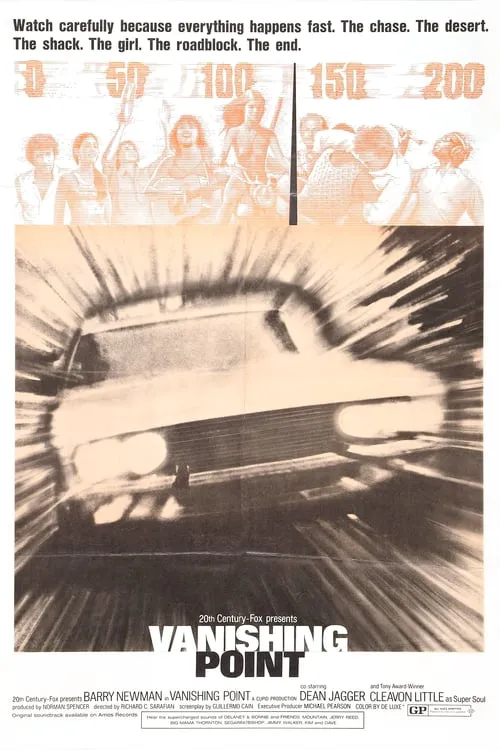Vanishing Point

Plot
In the early 1970s, the open roads of America are the perfect backdrop for a story of self-discovery, freedom, and the allure of the unknown. Director Richard C. Sarafian's 1971 film, Vanishing Point, is a thought-provoking road movie that explores the human condition through the eyes of a lone driver, Kowalski, and his majestic 1970 Dodge Challenger. Kowalski, played by Barry Newman, is a stoic and introspective driver who has lost his girlfriend, and consequently, his purpose in life. He works for a car delivery service, transporting vehicles from one coast to the other, but his job has become a mere means to a monotonous end. That is until he meets the enigmatic 1970 Dodge Challenger, a gleaming black beauty that stirs something deep within Kowalski. As he takes delivery of the car in Colorado, he begins to envision a journey that will take him across the Grand Canyon, the Mojave Desert, and the winding roads of California, ultimately ending in San Francisco. As Kowalski accepts a $10,000 bet to deliver the Challenger in under 15 hours, he begins to tap into a deeper level of consciousness. The road, once a mere means to an end, becomes an extension of himself, a reflection of the freedom and the thrill of the unknown. The Challenger, named Kowalski's pride, becomes his loyal companion, a symbol of rebellion against the monotony of daily life. As Kowalski hits the open road, he encounters a motley crew of characters who add depth and complexity to his narrative. There's the eccentric Supercharger gang, a group of bikers who embody the anarchic spirit of the times. They offer Kowalski a fleeting glimpse into a world of freedom and abandon, but also serve as a cautionary tale about the dangers of excess. The film's cinematography is stunning, capturing the vast expanse of the American West in all its glory. Director Sarafian employs a range of visual techniques to convey the sense of movement and freedom that defines Kowalski's journey. The camerawork is fluid and kinetic, often mirroring the twists and turns of the road, while the use of long takes and point-of-view shots immerses the viewer in Kowalski's world. At the heart of Vanishing Point is a profound meditation on the human condition. Kowalski's journey is not just about delivering a car; it's about the search for meaning and purpose in a seemingly meaningless world. As he hurtles across the country, he encounters a series of vignettes that reveal the fragility and beauty of human existence. There's the woman who is haunted by her past, the truck driver with a broken heart, and the young couple on their honeymoon, each of them struggling to make sense of the chaos that surrounds them. Kowalski's own backstory is gradually revealed through a series of enigmatic flashbacks, which add a layer of depth to his character. His relationship with his estranged girlfriend, the loss of his job, and his own sense of disconnection all contribute to a sense of disillusionment that fuels his journey. Yet, as the film progresses, Kowalski begins to let go of his ego, and the need for control and precision that has defined his life. The Challenger, with its black-on-black paint job and menacing V8 engine, becomes an extension of Kowalski's psyche, mirroring his own conflicted emotions. As they speed across the desert, the car and its driver become one, an unstoppable force driven by a primal urge to transcend the limitations of daily life. The film's climax, in which Kowalski arrives in San Francisco just under the wire, is both thrilling and bittersweet. As he pulls into the delivery depot, he is greeted by a figure who represents the return to reality, a return to the monotony of his former life. But Kowalski is no longer the same person; he has been irreparably changed by his journey, and the loss of his freedom. Vanishing Point is more than a road movie; it's a profound exploration of the human condition. Director Sarafian's use of visual and thematic elements creates a cinematic experience that is both thrilling and thought-provoking. As Kowalski speeds across the American West, he embodies the existential anxiety of the 1960s and 1970s, but also the eternal quest for meaning and purpose that defines us all.
Reviews
Recommendations




